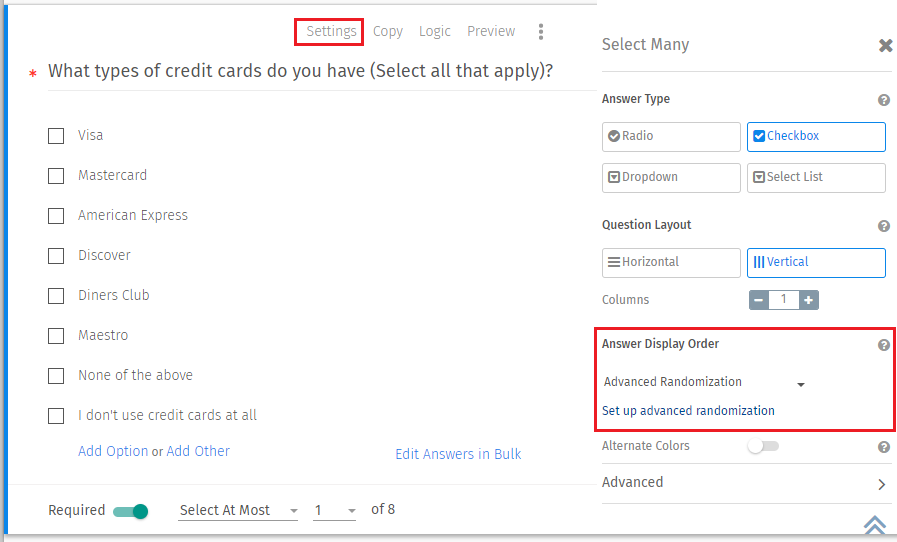
Advanced Randomization - How to?
Randomization is a research technique that is used to overcome order bias- the bias that can result due to the order of answer choices. Respondents tend to favor choices at the beginning and at the end of a list because they are more memorized. First items may also be chosen by respondents to save time.
Order bias can be taken into account by randomizing the order in which the answer choices are presented.
- Simple Randomization: This option randomizes the order of all answer choices
- Random Sub Selection: This option randomly displays a specified number of choices from the total choices available.
- Advanced Randomization: Using this option you can create subgroups of choices. Then, you can randomize all choices in one group and randomly display a specified number of choices in another group.
- Click on the Edit >> Workspace.
- Click on Question Settings.
- Select Advanced Randomization from Answer Display Order.
You’ll see a link to set up Advanced Randomization.

Advanced Randomization helps you to divide the answer choices into 3 different categories
Items in this category will always be displayed in the same order as presented in the list. You can use the up and down arrows to the left to reorder the choices:

In the above example, “Visa” will always be displayed at the top, “None of the above” and “I don’t use credit cards at all” will always be displayed at the bottom.
Items in this category will be inserted randomly into the question in the spots labeled {random}.

Items in this category will be inserted randomly into the question in the spots labeled {random subset}. Here, you specify the number of choices to be inserted.

Items in this category will not be displayed.

In research surveys, there are multiple questions with the same set of answer options. Sometimes it is required that the random order used to display the answer options in the first question has to be preserved so the same order is used in the following questions.
This can be achieved using extraction
- Create the source question and set up randomization using the steps described above.
- Create the follow up questions using extraction
- The order from the source questions will be preserved in the extracted questions.

